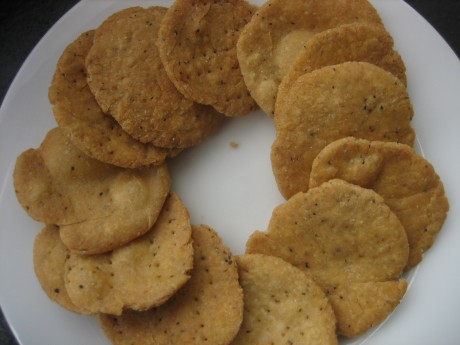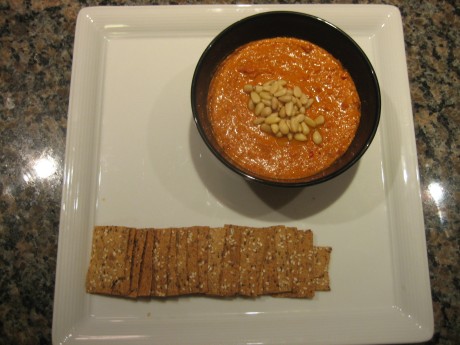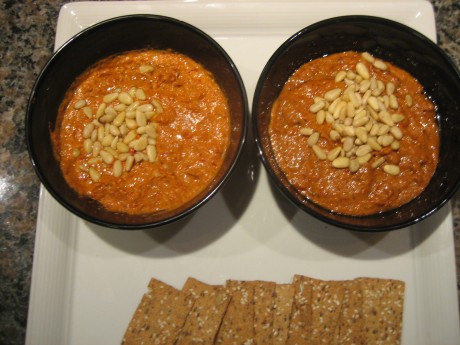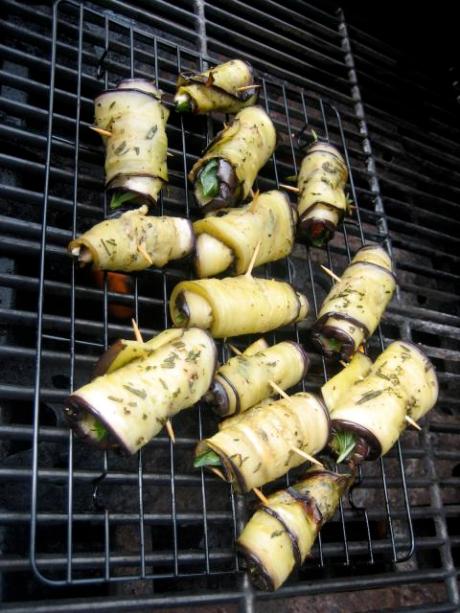Mathri
April 9, 2010
The thought of mathri transports me to the halls and laws on Sarojini Bhawan where my girlfriends and I spent many winter afternoons lounging about and feasting on the mathri and achaar sent by one sweet mom or another. That, along with Mahesh Ji’s chai, highly sweet and kadi, the kind I would not drink today, were the stuff our sun-touched days were made of. We all treasure those memories so much that even our e-group is called mathri-achaar!
Then, after I got married to this guy from Rajasthan, I got to taste the savory heaven that is MIL’s mathri. Whenever she is visiting, she makes a small batch, despite my loud protestations of not wanting to eat deep-fried foods, but then somehow, that small batch vanishes surprisingly fast at the hands of DH and yours truly. MIL only smiles knowingly.
So when Pink God posted a recipe from Nani ji for making mathri, I could not resist and wanted to make some too. But I also wanted the taste that MIL’s mathri has. So I called MIL and followed her recipe instead (which is fairly close to what Anjana posted with small differences)
Ingredients
3/4 cup whole wheat flour
1/2 cup maida (all purpose flour)
1/4 cup sooji (semolina)
1/4 cup ghee (clarified butter)
about a 1/4 cup warm water for dough
salt to taste
1/2 tsp ajwain (carom seeds)
Oil for frying
Method
In a parat (wide, deep plate), mix all the flours, salt and ajwain.
Heat the ghee a little bit if it is solid and then add it to the parat.
Rub this mixture with your hands for a good ten to fifteen minutes. The fat should be very well incorporated with the flour. This step is very important as this is what makes the mathri khasta, or flakey.
Make dough with a small amount of lukewarm water. The dough should not be soft.
Divide the dough into small balls, and using your rolling pin (belan), roll out small roundels.
With a fork, pierce each roundel multiple times. This ensure that the mathris will not puff when you fry them in oil. I think if the dough is really tight, that should anyway not happen, but I did this step anyway.
Heat oil and reduce the heat to medium low. Fry the mathris in batches of 5 or 6. Do not overcrowd them in the pan. Also, frying on medium low is very important. You don’t want to fry the mathris on high heat as then they will quickly brown on the outside but will not be cooked from the inside.
For me each batch of mathri took about 8 to 10 minutes and my mathris did not change color too much. These were dark initially because of the partial use of whole wheat flour instead of maida. If you want to further darken them, then you could use Anjana’s technique of raising the temperature of the oil towards the end and then bringing it down before putting in the next batch. With my glass top cooking surface, I am not able to quickly change the temperature so I did not do that. I also liked the color that my mathris came out to be in any case so it worked out.
The resulting mathris were approved by DH who is a mathri purist and used to only like the ones that his Mom made. We enjoyed them with home made lemon and mango pickles. There is something about mathri-achaar, I tell ya… 🙂
Muhammara – an experiment
March 13, 2010
One of my dear friends, who blogs at Baking at Midnight, posted an intriguing recipe a couple of days ago. It was a Turkish dip called the Muhammara. I had never heard about this dip before though I had had many delicious Turkish ‘delights’ at Anjana’s place after they came back from their vacation in Turkey. Somehow the thought of melding the flavors of caramelized onion, sweetness of the red bell pepper and the earthiness of walnuts sounded really appetizing.
When I read through the recipe, it reminded of certain other red pepper dips, usually with garlic, like the one that Emeril makes. Now, I am not usually a big Emeril fan, but I wanted to try the Muhammara with roasting the onion and the red bell pepper instead of sauteing them. I felt that it might enhance the flavors. But, given my rather undeveloped culinary intuition, I was not entirely sure. A scientist by training, what do I do? I plan an experiment. That’s right, a taste experiment.
The Experiment
A friend of mine was coming over to watch a movie at my place last night (though we eventually ended up watching another one after all). I decided to have her and DH be the subjects of my experiment. The idea was that I would make a portion of the dip with exactly Anjana’s recipe, and I would make another portion with everything same except 1) the bell peppers would be broiled and peeled, 2) the onions would be roasted and 3) nothing else would be different. And then we would exactly know the difference that roasting would bring to the recipe. Okay, maybe not exactly, since it is a subjective thing, taste, but still, it would be somewhat precise, maybe. (I am going to have deal with this precision question a lot in the years to come!).
Okay, so anyway, that is the setup. And here are the results.
The Results
The sauteed version got done sooner. Now, sometimes, this can be a win in itself. But that is not what this experiment was about. But the taste was oh-so-delicious! This recipe is a keeper in any case (thanks Anjana!).
And then, presently, the other dip was done as well.
First, the look: the roasted version looked a shade darker than the sauteed one.
Then, the smell: the roasted version smelled the same rich EVOO and red pepper smell as the other one. Wait, was this one a little more smoky?
Participant A: No.
Participant B: Yes.
And finally, and most importantly, the taste:
Participant A (paraphrasing): I liked the sauteed one, as it has more of a lighter, fresher flavor to it.
Participant B (paraphrasing): Definitely, the roasted one. It has a rich, smoky flavor that is way better.
What? So are we even? Well, I know, my bad for setting up the experiment without a large, representative, statistically significant sample. But, we need to have a decision, right? I mean, which one do I make when I have guests over the next time? Okay so I decided to cast a vote as well (this was not the time to be the neutral experimenter).
I tasted one, and then the other. And then I had a little more of the the first one. And then a little more of the second. (Okay, yes, I was hungry). And, I agreed with both of their descriptions. The roasted one did have a deeper, smokier flavor while the sauteed one had brighter notes. My verdict is that the sauteed one would work more for outdoor summer parties (or with the lighter Bollywood fare, like our first movie of the night) and the roasted one would be my dip of choice for late fall evenings (in front of dark brooding movies like our second movie of the evening).
There, go figure! Or have your own taste experiment 🙂
When I first came to the United States as a grad student, my university paired me with a host family who had generously volunteered to help and orient a new foreign student in their city. The Taubes were a wonderful family and I enjoyed learning about the American life through them.
It was at my host family’s place that I had eggplant rollups for the first time. Till then I had only had eggplant, or baingan as we call it in India, in the form of the fire-roasted Bhartha, or the stir-fried Aloo-Baingan. This new dish was a revelation for me as I had never realized that our Baingan Raja could taste so sophisticated, yet earthy at the same time.
Many years later, as I was remembering that wonderful taste, I wrote an email to my hostess and asked her if she could share the recipe with me and here is the recipe that she sent to me. Thanks Michelle! 🙂
“We slice the eggplant length wise about 1/4 inch thick then brush it with olive oil and add garlic and herbs if you like such as rosemary, thyme or oregano. Then put it on a baking sheet and broil it briefly on each side until soft but be careful not to burn. Place a piece of oil packed sundried tomato, a basil leaf and some blue cheese on one end and then roll it up. A toothpick to secure it is optional.”
I sometimes substitute the bleu cheese with goat cheese. Any soft cheese with a strong flavor will do. Also remember to season the eggplant with salt and black pepper before broiling it.
Enjoy!



